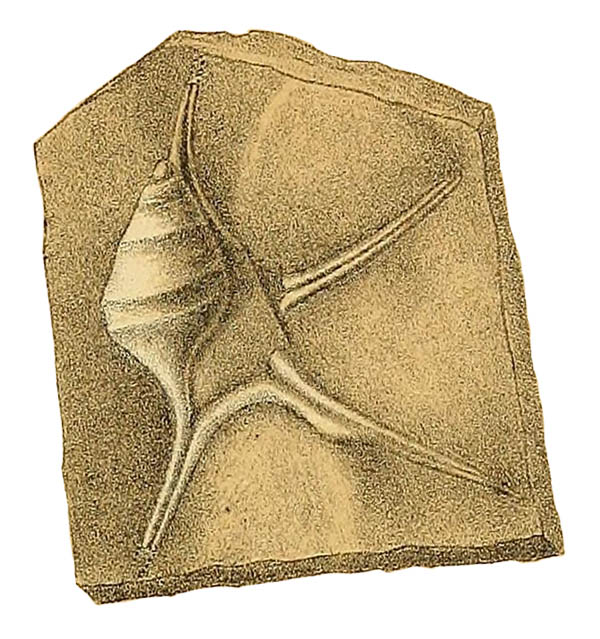|
edit SideBar
|
Species / Tessarolax Hitzii
Stromboidea
Original Description of Tessarolax hitzii by White, 1883, p. 29:
- "Shell rather small; length of the spire about one-half that of the whole body of the shell exclusive of the canals; its apex a little blunted; volutions about five, that of the body bearing two revolving angles or narrow ridges which apparently end respectively upon the two slender spines of the outer lip; the whole spire covered with a layer of callus which obscures the sutures, and also the original surface of the volutions upon which there are apparently some revolving lines; outer lip bearing two long slender spines projecting from its border, each being grooved upon its under surface; the anterior labial spine directed outward and forward, and having near its middle a moderate enlargement, where it is also bent a little downward; the posterior labial spine gradually and uniformly tapering from base to point, directed outward and slightly curved backward; anterior canal long slender and spine like, flexed a little downward and to the left, its grooves being very narrow and linear ; posterior canal also slender, its grooves being narrow and linear like that of the canal and the labial spines, extending from the aperture close alongside of the spire and projecting as a slender spine much beyond its apex, from which it gently curves to the right; the callus which covers the shell apparently little if any thickened upon the inner lip. Length, from the base of the anterior canal to the apex of the spire, 19 millimeters; breadth of body-volution, exclusive of the aperture and outer lip, 9 millimeters; breadth, including the aperture and outer lip, but excluding the labial spines, 14 millimeters. The apices of both the anterior and posterior canals, and also of the posterior labial spine are broken off in the type specimen, but the anterior spine is entire, and the others are evidently nearly so, the anterior spine being 19 millimeters in length. The portion remaining of the posterior canal projects 5 millimeters beyond the apex of the spire, and that of the anterior canal projects 7 millimeters beyond the anterior border of the aperture. The anterior and posterior canal-spines and the posterior labial spine are each about 1 1/2 millimeters in diameter, the anterior labial spine being about double that width at its mid-length where it is broadest."
Stratum typicum: "Fort Pierre Cretaceous Group" (now Pierre Shale, Campanian / Maastrichtian, see Cobban et al., 2006)
Locus typicus: Fort Shaw, near Muscleshell River, Montana, USA
Tessarolax hitzii White, 1883, pl. 15, fig. 2a
Etymology: named after Dr. R.B. Hitz, US National Museum
References
- Cobban, W.A., Walaszczyk, Ireneusz, Obradovich, J.D., and McKinney, K.C., 2006, A USGS zonal table for the Upper Cretaceous middle Cenomanian−Maastrichtian of the Western Interior of the United States based on ammonites, inoceramids, and radiometric ages: U.S. Geological Survey Open-File Report 2006-1250, 45 p. Fulltext
- White, 1883
|

